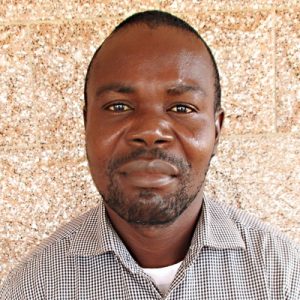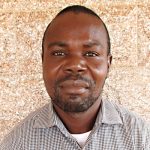In 1992, the community got together and built a two-classroom mud block building to open what is now DEC Bompa Primary School. The population of the school eventually increased and could no longer fit into the small building. Then in 1997, the community mobilized again to construct a three-classroom building. Fortunately, an organization called the Christian Children Fund supplied them zinc for roofing. The classrooms are huge and are divided to host two classes each.
In 2000, this school sent seven candidates for the National Primary School Examination. All scored between 250-270, surpassing the government passing mark of 230. Currently, they have two students enrolled in the University of Sierra Leone.
The grounds of this school cover approximately 2,100 square feet. A good percentage of the total area is occupied by the football field and is right in front of the building. The school still has just a single three-classroom building and two classes occupy each room. There is also a small room for the headteacher.
The areas surrounding the back and right side of the school compound are heavily forested. Tall palm trees and other tall trees protect the school building from heavy wind. The palm trees are also a source of livelihood for the community people. People harvest the kernel and produce palm oil to sell in bigger towns and then support themselves and their families with the proceeds.
Bompa is in the interior of Lokomasama. It is located in a very forested part of the chiefdom and most of its vegetation is intact because urban development is going very slowly. It is not necessarily a coastal community, however, it benefits from the gentle wind from the Atlantic Ocean because of its closeness to Yurka. The people of this place live a traditional life with farming as their source of livelihood.
The village itself is built along the main road that leads to Bailor Wharf, a very famous fishing community. All the houses are in straight lines on opposite sides of the road and most of them are built from locally produced mud blocks. Few have cement plastering to help them stand the test of time.
Currently, this school has no access to clean drinking water. There is a hand-dug well on the school grounds, but it is dry for the majority of the year because it is not deep enough. This is a common problem for these kinds of wells in the region because the water table will drop at various points throughout the year.
As a result, drinking water is fetched from a very distant swamp source. For this group, going to the swamp on a busy road is very risky and therefore trips are not frequent. Students' uniforms go days without being cleaned and bathing before going to school is seldom.
The water itself is unsafe for drinking. An open source like this is open to many contaminants. What is most problematic is the fact that this source is shared with wild animals. Some of these animals are infested with very deadly diseases that may kill humans.
Heavy contamination of this source is also caused by the very people who are supposed to protect their source. Community members use this source to farm, bathe, and launder. In most cases, they are not mindful of the containers they dunk into the source and some wastewater surely ends up in the swamp. All of these factors contribute to an unsafe health situation for the students.
Here’s what we’re going to do about it:
Well Rehabilitation
The well marked for this overhaul is dry for most of the year and needs major work to supply adequate, clean water to the community year round. The pump will be removed, and a hand auger will be lowered inside and powered by a drill team. This hand auger will allow the team to drill several meters deeper to hit a sufficient water column that will ensure the well supplies water throughout all seasons.
As the team drills, casing will be installed, transforming the bottom of this hand-dug well into a borehole. PVC piping will connect this lower system directly to the pump, a construction that we know will also improve the quality of water.
Once this plan is implemented, everyone within the community will have access to safe drinking water in both quality and quantity, even through the dry months.
Hygiene and Sanitation Training
There will be hygiene and sanitation training sessions offered for three days in a row.
No handwashing stations were observed here. After our visit, the hygiene and sanitation trainer decided it would be best to teach community members how to build a tippy tap (a hand-washing station built with a jerrycan, string, and sticks). They will use these tippy taps for handwashing demonstrations, and will also teach about other tools like dish racks and the importance of properly penning in animals.
These trainings will also strengthen the water user committee that manages and maintains this well. They enforce proper behavior and report to us whenever they need our help solving a serious problem, like a pump breakdown.

 Borehole Well and Hand Pump
Borehole Well and Hand Pump
































